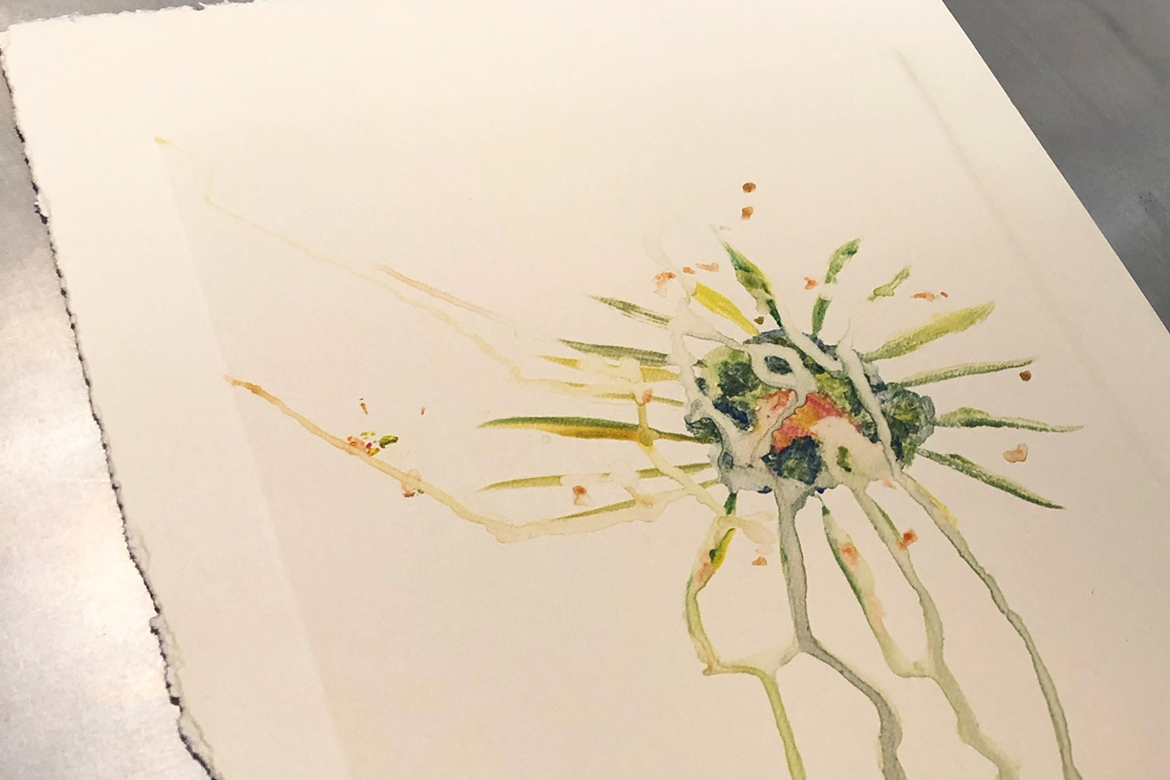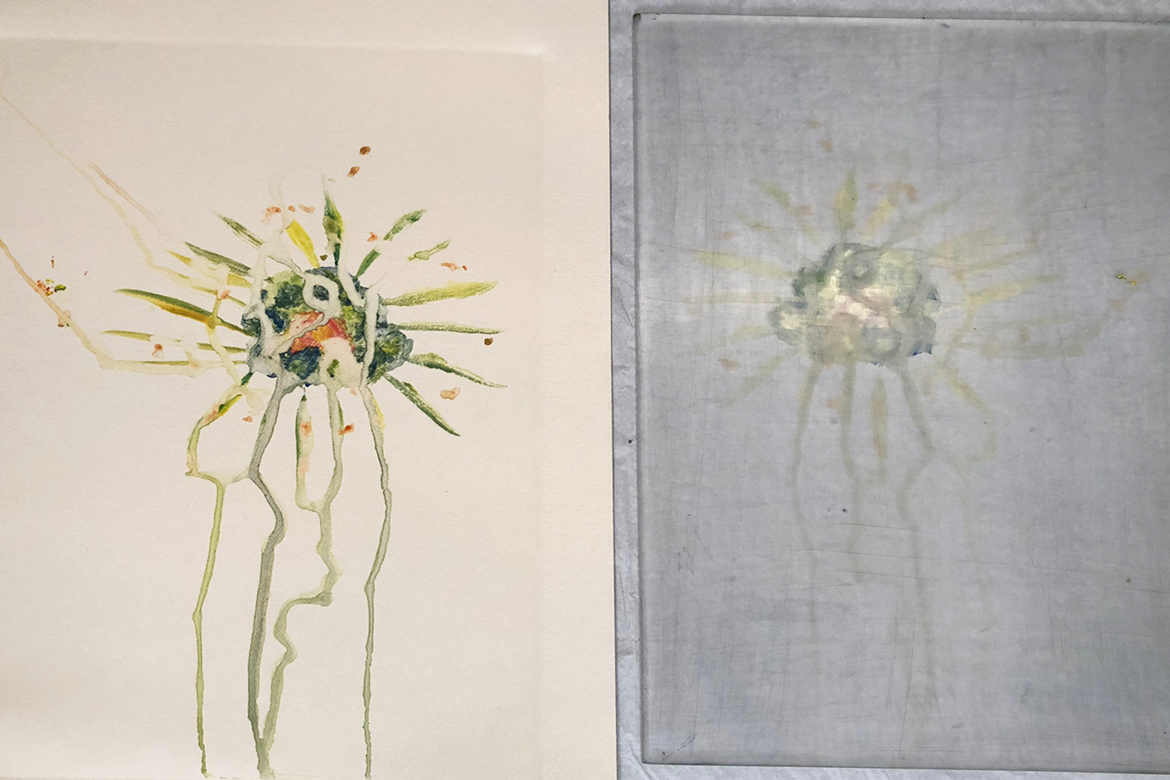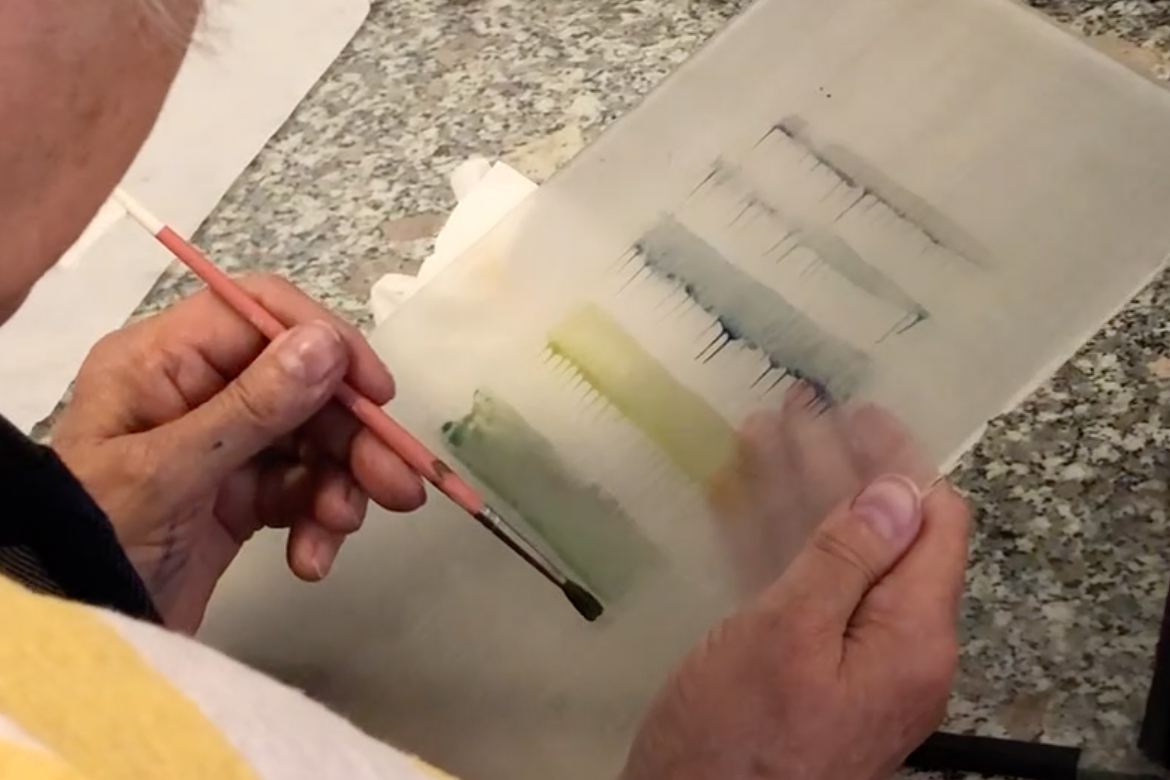Using watercolors in monotyping
Delicate nuances of color


Understand the process
In this technique, you need to work on a piece of plexiglass which has been previously sanded.
Watercolor Paint is applied on plexiglass with paintbrushes.
It is essential to work in layers: each layer needs to be dry before adding another, otherwise paint won't stick properly.
To print the image, lay a sheet of damp paper on your plexiglass and run through an etching press with moderate pressure.
You can obtain a second print which is called "ghost print" if you see that a lot of color is left on the plate.
A plate can be reworked over and over again by adding more color to what is left after printing: Just follow the contours to add colour and make a second impression.
What is special about this method: You can work your plate forever because the paint will dry but the damp paper you place on it before printing will reactivate the paint.
